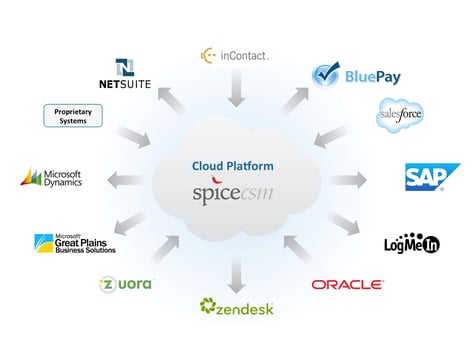 Considering the importance of customer engagement and valuable goodwill, contact centers appreciate the importance of robust tools that assist agents in performing their tasks. Customer relations management and various helpdesk software solutions enable personnel to provide high quality service, but maintaining multiple applications creates a new set of challenges. Disparate systems result in severe disconnect between and among the applications which results in inaccurate vital customer data.
Considering the importance of customer engagement and valuable goodwill, contact centers appreciate the importance of robust tools that assist agents in performing their tasks. Customer relations management and various helpdesk software solutions enable personnel to provide high quality service, but maintaining multiple applications creates a new set of challenges. Disparate systems result in severe disconnect between and among the applications which results in inaccurate vital customer data.
So, new initiatives have resulted in technology that connects data and applications, uniting them under one umbrella platform. These solutions resolve the disparity problems and streamline call center operations, featuring the following benefits:
- Single-search Field Functionality: When a call center maintains applications that don’t link data with all applications, agents must conduct multiple searches to access the information they need. With a data and application connector, search result aligns within a single desktop and agents can provide a high quality customer experience.
- Consolidation of Multi-brand/Multi-function Applications: The array of applications used by agents is created by different developers; therefore, different processes are required to access the features and capabilities within each application. This result in confusion and distractions in the call center. Agents must often use notebooks or written reminders on different processes, decreasing productivity. Connecting data and applications means agents learn a single set of processes, allowing them to focus on providing excellent customer service.
- Eliminate Cut/Copy & Paste Shortcuts: It’s essential to maintain accurate data within various applications for future customer encounters, which means inputting the same details numerous times in many applications. Those cut/ copy and paste are tedious tasks and prompt mistakes. When data is linked with all applications, agents enter the data once, allowing them to focus on their customers.
- Data Updates in Real-Time: Under the cut/copy and paste approach described above, agents must invest time into updating customer data and other information. This inevitably results in delays of several hours or even days, meaning outdated data may still remain in disconnected systems. Data and application connector ensure that data is updated in real time to reflect the most current information for the next agent taking a customer call.
- Condensed Training Cycles for New Hires: The training required to get agents up to speed on all the applications they need to respond to customer issues is considerable. Agents must also learn to navigate within several systems to access the necessary information. Linking data and applications within one platform greatly condenses training time and gets new hires in the call center faster.
Platforms that provide the critical connection between data and applications are highly effective at resolving the more common challenges in the call center.
Companies don’t need to engage in costly “rip and replace” processes or build from the ground up, they integrate their existing applications with a data and application connector, within the platform. The prompt integration deployment and the minimal cost ensure an excellent ROI.
One of our decade long customers affirms “The uniqueness of SpiceCSM resides in its all encompassing ability to integrate seamlessly disparate operating systems and applications.



